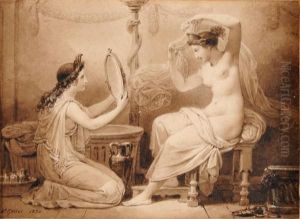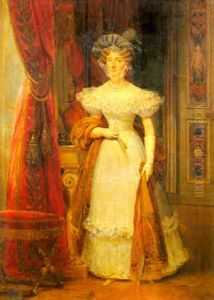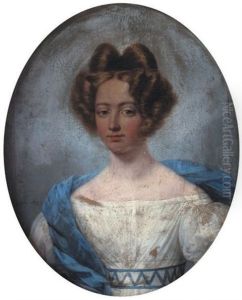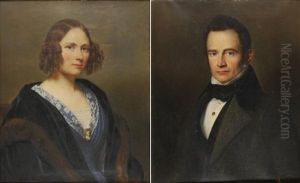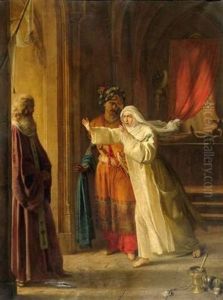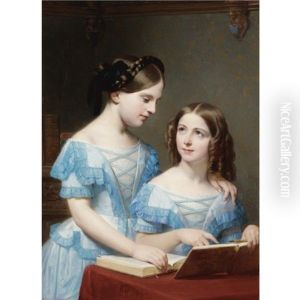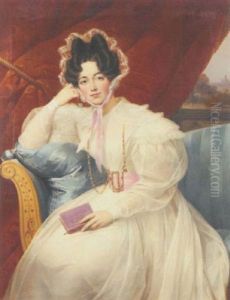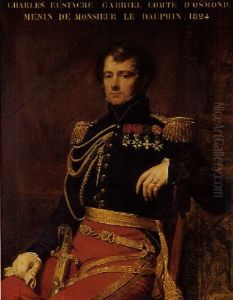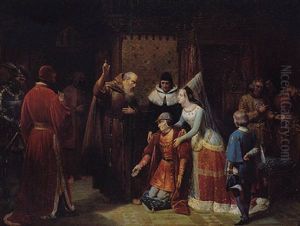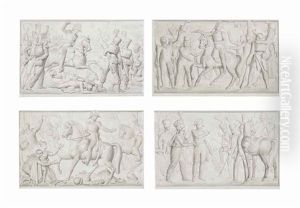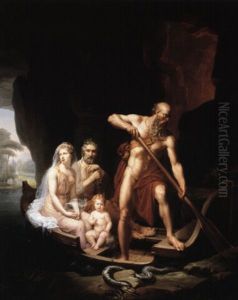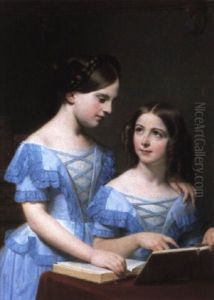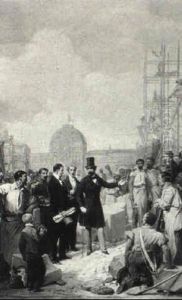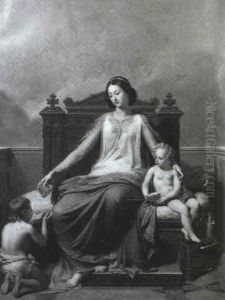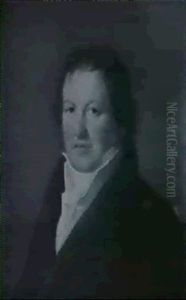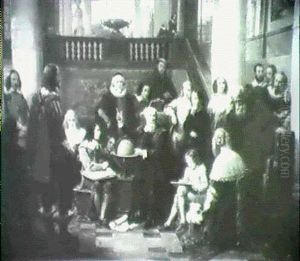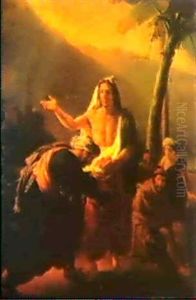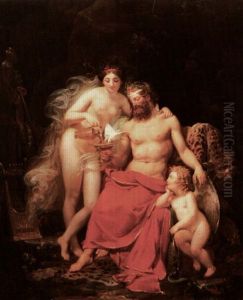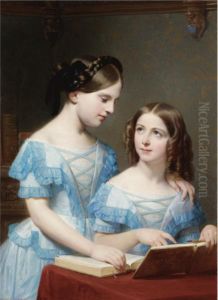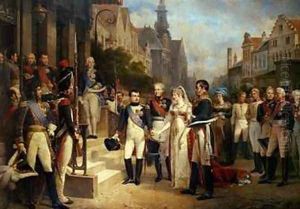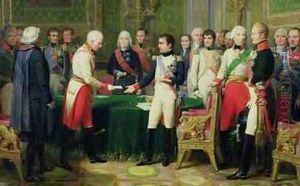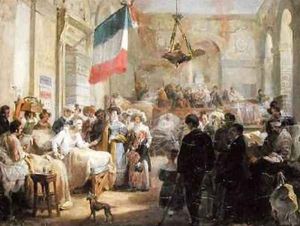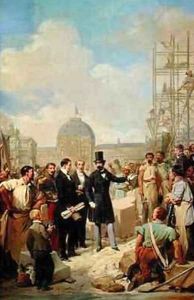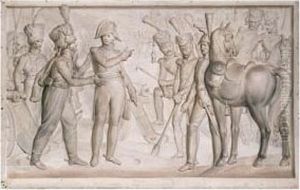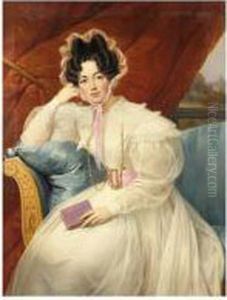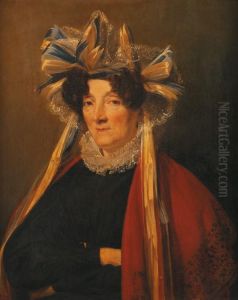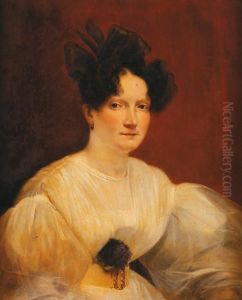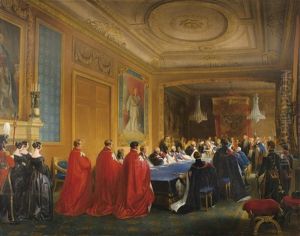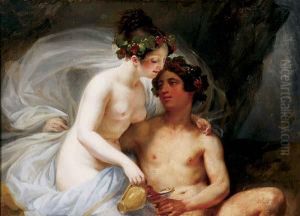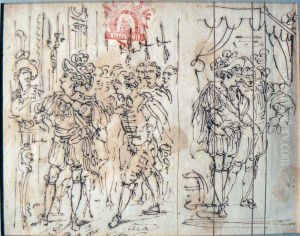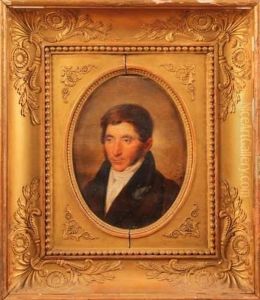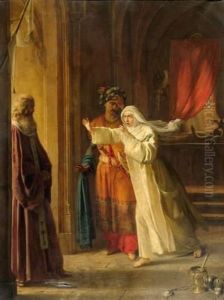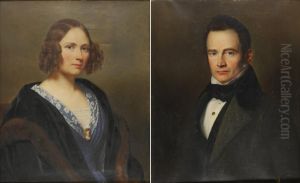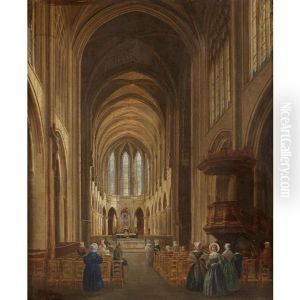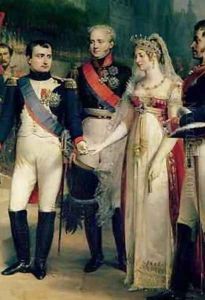Nicolas Louis Francois Gosse Paintings
Nicolas Louis Francois Gosse, born in 1787 in Paris, France, emerged as a notable figure in the 19th-century French art scene. His life spanned an era of significant political and social upheaval in France, including the French Revolution, the Napoleonic Wars, and the subsequent restoration of the French monarchy. These events provided a rich backdrop for Gosse's artistic endeavors, influencing both the content and style of his work.
Gosse was trained in the neoclassical tradition, which was prevalent during his early years. He studied under several prominent artists of the time, including Jacques-Louis David, one of the most celebrated painters of the neoclassical movement. This training instilled in Gosse a mastery of classical forms and techniques, as well as an appreciation for the beauty of antiquity. However, unlike many of his contemporaries who focused largely on historical and mythological subjects, Gosse also displayed a keen interest in contemporary themes, often depicting events and figures from recent history.
Throughout his career, Gosse exhibited his work at the prestigious Paris Salon, the official art exhibition of the Académie des Beaux-Arts in Paris. His submissions to the Salon were well received, earning him accolades and increasing his visibility among the French art community. Despite his success, Gosse did not achieve the same level of fame as some of his contemporaries, such as Eugène Delacroix or Théodore Géricault, partly because his work did not align with the emerging Romantic movement that began to dominate French art in the early 19th century.
Gosse's oeuvre includes a wide range of subjects, from historical paintings and portraits to religious and genre scenes. His approach to these subjects was characterized by careful attention to detail, a clear narrative structure, and a commitment to realism. This realism was not just in the physical resemblance of his figures but also in the depiction of emotional depth and complexity. Despite his technical skill and the quality of his work, Gosse's adherence to neoclassical principles at a time when the art world was moving towards Romanticism and, later, Realism, meant that he was somewhat out of step with the prevailing trends.
Nicolas Louis Francois Gosse passed away in 1878, leaving behind a legacy that, while not as widely recognized as that of some of his peers, contributed significantly to the richness and diversity of French art in the 19th century. His works, preserved in museums and private collections, continue to offer insight into the transitional period of French art, bridging the gap between the neoclassical and modern traditions.
